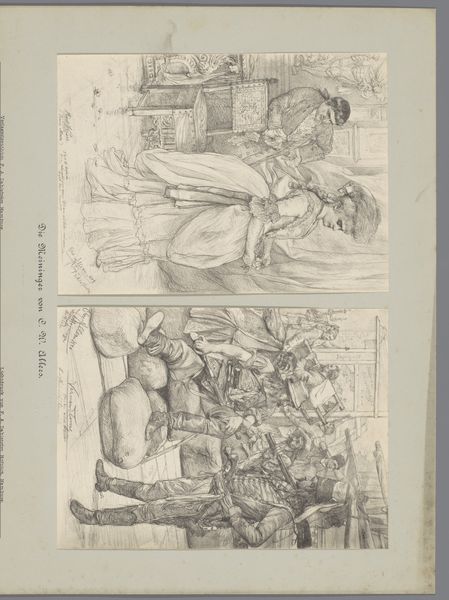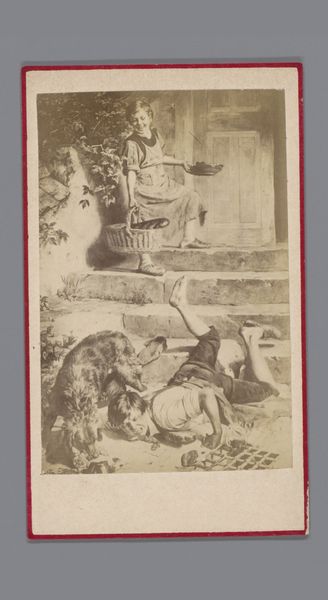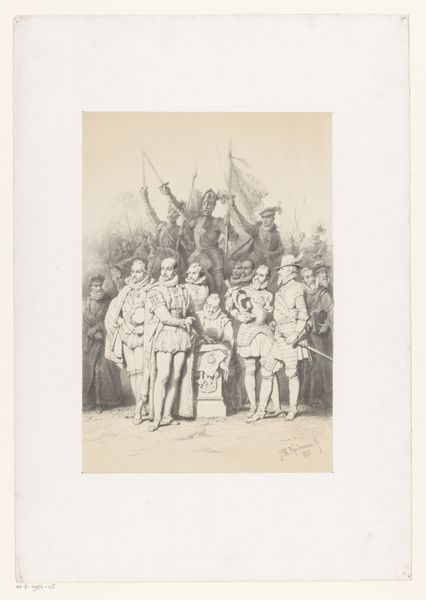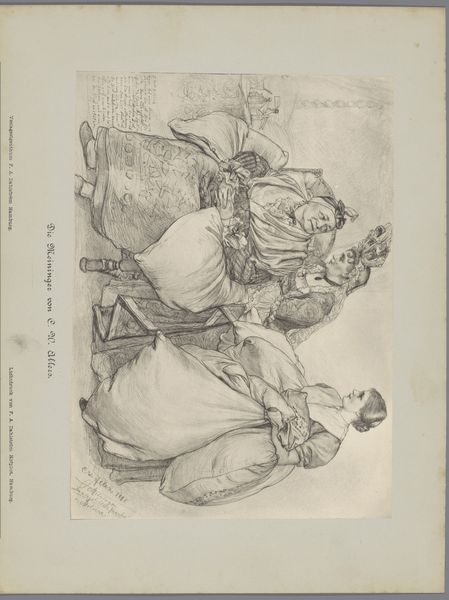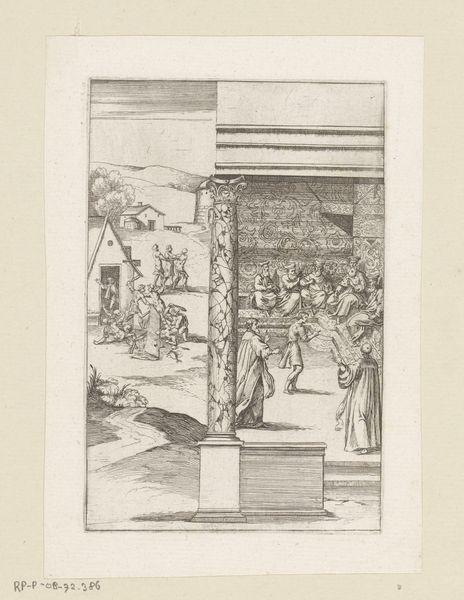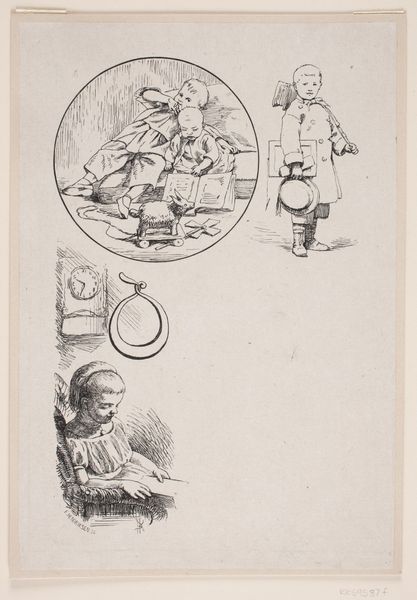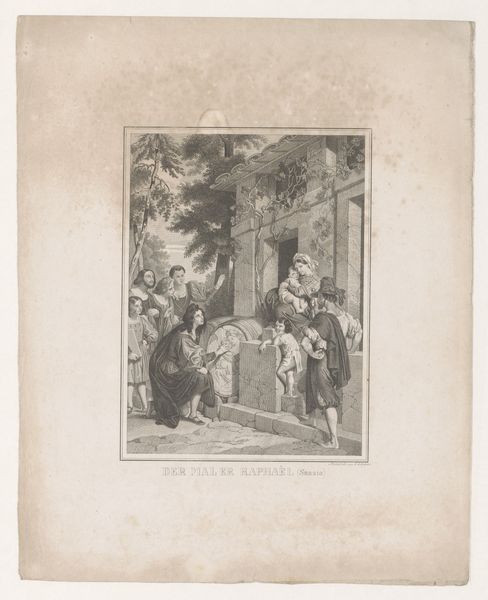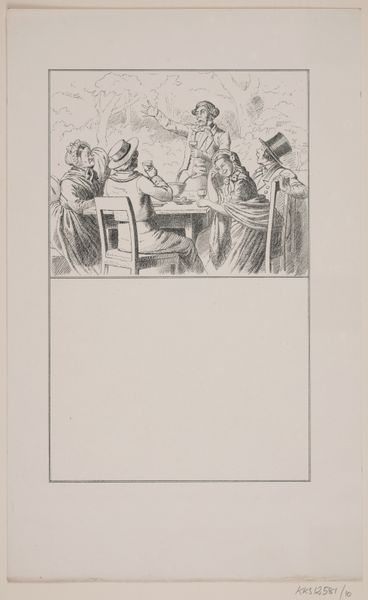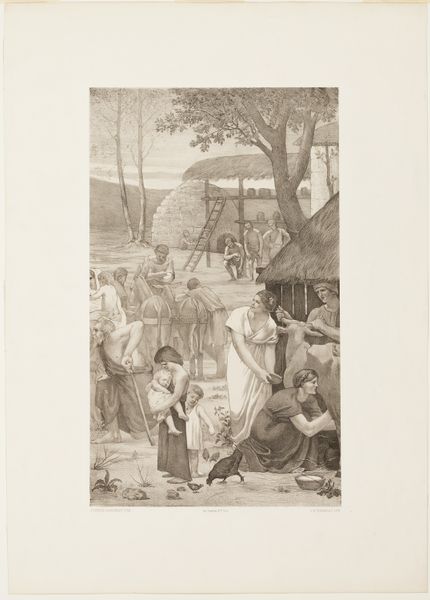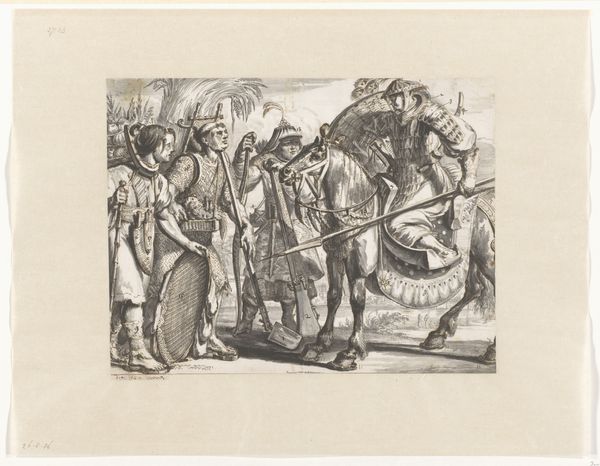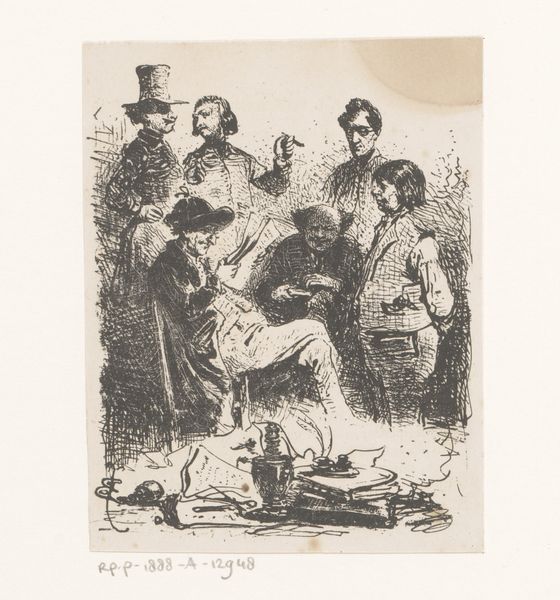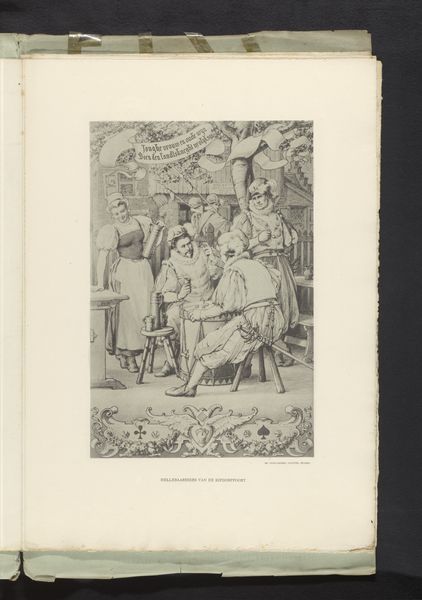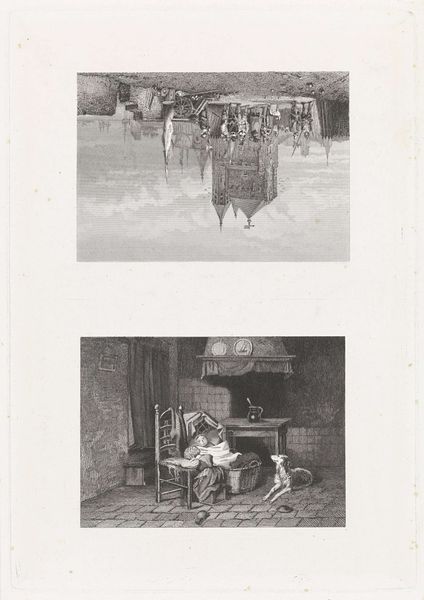
drawing, print, pencil
#
pencil drawn
#
drawing
#
narrative-art
# print
#
pencil sketch
#
pencil drawing
#
pencil
#
history-painting
Dimensions: 230 mm (height) x 182 mm (width) (billedmaal)
Editor: We’re looking at an illustration from 1895 by Ludvig Købke titled "Illustration til H.C. Andersen: "Kejserens nye klæder," or “The Emperor’s New Clothes," rendered with pencil on paper. The scene teems with people. I’m struck by the way the artist uses shading and line work to create a sense of depth and movement despite it just being pencil on paper. What do you see in this piece? Curator: The formal qualities of this work offer significant insights. Note the interplay of light and shadow. The composition, although seemingly chaotic, directs the eye to specific focal points using carefully modulated tonal variations. The artist exploits the intrinsic properties of the pencil – its capacity for both delicate hatching and bold, declarative lines – to articulate the narrative. Editor: So, you're suggesting the technique is intrinsically linked to how we experience the story being told? The density of the lines does draw the eye in specific directions. Curator: Precisely. Consider how the dense hatching around the figures' faces enhances their expressiveness. Furthermore, the unworked areas create a stark contrast. This juxtaposition, not just subject matter, generates the disquiet we feel observing such delusion in a crowd. It calls attention to the mechanics of image making as it drives the narrative forward. What do you observe regarding that large open area on the right of the composition? Editor: It almost looks like a void. I wonder if it has to do with the final printing? Perhaps for text to be overlaid, for lettering? It unbalances the piece. Curator: Perhaps so, but let us also contemplate its formal effect on the entirety of the work. It isolates the reactions of these figures while contributing tension between representation and artistic choices. This is a sketch as art; Köbke displays intentional, compositional choices with meaningful stylistic effect. Editor: I see. Thinking about it as less an illustration and more an artwork where the material and its arrangement create a whole new meaning, rather than simply illustrating the story. Thanks! Curator: My pleasure. Keep looking closely!
Comments
No comments
Be the first to comment and join the conversation on the ultimate creative platform.
